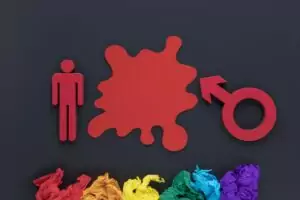Social Media & Society is a captivating and relevant research area, encompassing various aspects from interpersonal relations to global communication dynamics. A well-defined thesis statement is pivotal for delineating your research parameters and objectives in this expansive field. Below, you’ll find insightful examples of both good and bad thesis statements on Social Media & Society, accompanied by comprehensive explanations.

✅ AI Essay Writer ✅ AI Detector ✅ Plagchecker ✅ Paraphraser
✅ Summarizer ✅ Citation Generator
Good Thesis Statement Examples
Good: “This thesis evaluates the correlation between prolonged social media usage and increased levels of anxiety and depression among teenagers in the United States.”
Bad: “Social media affects teenagers’ mental health.”
The good statement presents a specific correlation, target demographic (teenagers in the U.S.), and identified outcomes (anxiety and depression levels). The bad example, while correct, is vague and lacks defined variables and demographic focus.
Good: “The proliferation of fake news on social media platforms has discernibly influenced political elections, swaying public opinion and voter behavior.”
Bad: “Fake news on social media impacts elections.”
The good statement provides a clear, arguable claim regarding fake news, public opinion, and voter behavior on social media. Conversely, the bad example states a general fact without depth or a specific area of impact.
Good: “Implementing educational programs that promote critical digital literacy can mitigate the negative effects of cyberbullying among middle school students.”
Bad: “Education can help reduce cyberbullying.”
The good example is researchable and offers specific solutions (critical digital literacy programs), target demographic (middle school students), and defined problem (cyberbullying). The bad statement lacks detail, specific solutions, and target groups.
Bad Thesis Statement Examples
Overly Broad: “Social media has changed the way people communicate.”
Although true, this statement is excessively general and does not specify which aspect of communication or which demographic is being explored.
Lack of Clear Argument: “Social media is popular among young people.”
While factual, this statement lacks a clear argument or specific research focus, rendering it ineffective as a research guide.
Unmeasurable and Unresearchable: “Life is unimaginable without social media today.”
Although many might agree, this statement is not easily measurable or researchable and does not provide clear directions for academic exploration.
Crafting a compelling thesis statement for research in social media and society is crucial for delineating your investigation and elucidating your academic endeavor’s aims and scope. A good thesis statement should be specific, debatable, and researchable, acting as a sturdy foundation for scholarly inquiry. In contrast, a bad thesis statement is often too general, lacks a clear argument, and is not conducive to empirical exploration. The examples and analyses provided in this guide furnish students with valuable insights for developing thesis statements that are academically rigorous and insightful for exploring the intricate relationship between social media and society.
Follow us on Reddit for more insights and updates.





Comments (0)
Welcome to A*Help comments!
We’re all about debate and discussion at A*Help.
We value the diverse opinions of users, so you may find points of view that you don’t agree with. And that’s cool. However, there are certain things we’re not OK with: attempts to manipulate our data in any way, for example, or the posting of discriminative, offensive, hateful, or disparaging material.